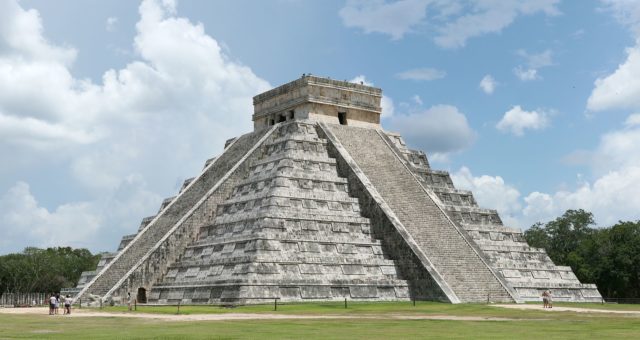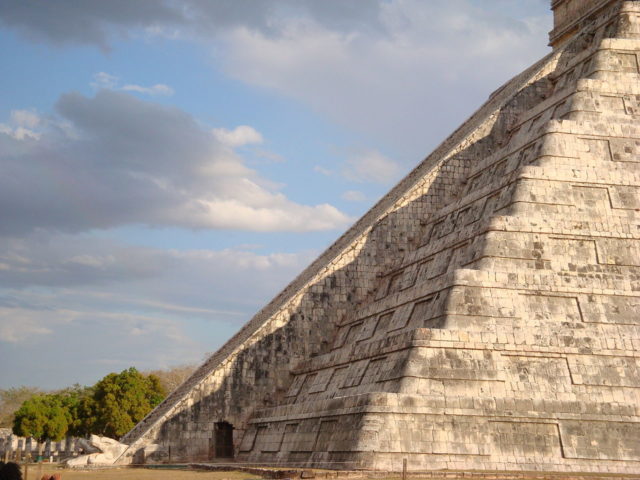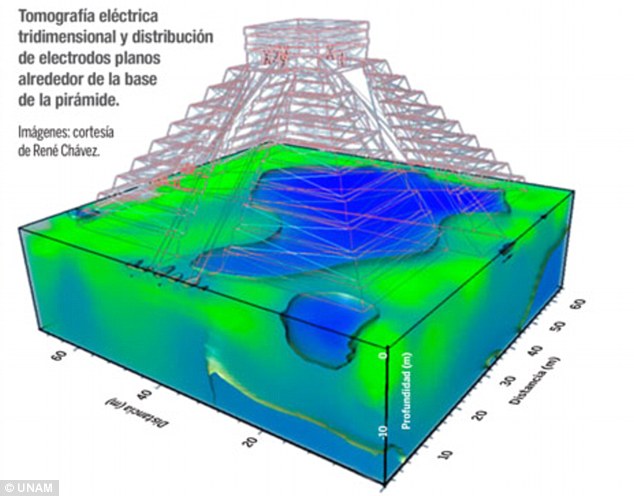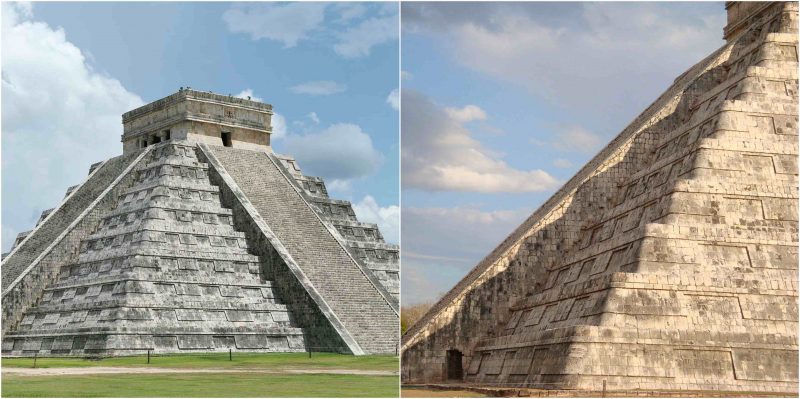As symbol of pride and dominance or a sign of intellect and astronomical interest, ancient monoliths and structures have been a source of mystery and inspiration for the wider part of human’s known history.
Pyramids have attained a special place in the formation of the narrative about the lifestyle and spiritual inspirations of the ancient civilizations.
These pyramids are not the unique to any single civilization of antiquity; the phenomenon is rather wide spread, and is complicated enough to keep a number of researchers and archaeologists busy for generations.

A recent discovery of a giant sacred sinkhole beneath one of the most celebrated Mayan pyramid in Mexico has revealed some alarming facts about the nature of the structure. The existence of the mysterious sinkhole, according to the researchers, could undermine the apparent solid infrastructure of the Pyramid.
The towering structure which is more than a thousand years old is known as the Temple of Kukulkan or sometimes as “El Castillo”. The famous Temple is the most amazing structure of the ancient Mayan city of Chichen Itza in the Yucatan Peninsula in Mexico.
The temple is believed to have been built as a sign of submission and reverence to Kukulkan deity that Mayan’s worshiped. According to the experts, the Mayans worshiped Kukulkan who was believed to be giant feathered serpent lurking in massive rivers underground and appeared on earth after an earthquake.

The archaeologists from the Mexico’s National Autonomous University, Andres Tejero-Andrade, has been leading the research on the Temple of Kukulkan and is the main source of first-hand information on the recent discoveries.
Dr Tejero-Andrade believes that the Mayans must have built the giant tower above the already existing cavern, from where they believed Kukulkan emerged hence making the place holy. The sinkhole has expanded to an alarming size of 82 feet by 114 feet with an estimated depth of 65 feet.
The detailed analysis of the cavern presented a worrisome situation for the researchers who deployed a special electrical resistance technique to study the existence and then the dimensions of the sinkhole. The technology enabled the scientists to create a map of the cavern without damaging the beauty of the Temple; only using and studying the effect of electrical resistance on the depth of the tower.

Materials vary in terms of their responses to the electrical flow, and the response of various materials can be precisely measured in terms of the resistance these materials pose when electric current tends to flow through them. Water has a different level of electrical resistance than land mass, whereas air is extremely resistant and easily indicates its presence when electricity flows through it.
Using the resistance response technology scientists were able to better understand the nature of cavern, which they now believe pose a serious threat to the tower.
The sinkhole is not a stand-alone ditch of water; it rather connects with other water reservoirs underground through a complex labyrinth of natural tunnels. Some of these tunnels connect the tower with other famous sites of the city such as the Mayan graveyard not very far from the actual tower.
The ongoing study reveals that in the near future the sinkhole could devour some parts of the tower due to its expanding nature, which could eventually lead to significant damage to the core of the pyramid. However, researchers believe they have more than enough time at hand to think of a plan to save this monument of ancient civilization from a slow death.
